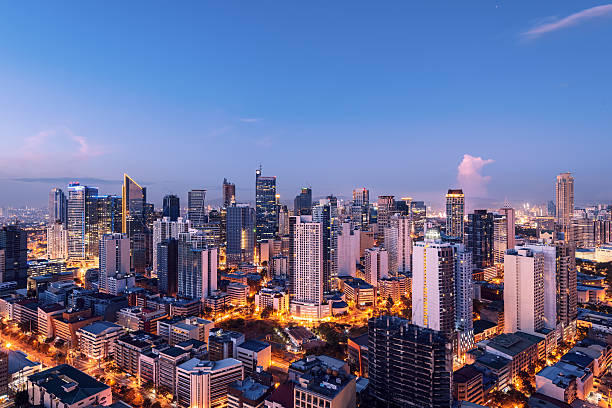
By: Ben O. de Vera – Reporter / Philippine Daily Inquirer /August 23, 2021
MANILA, Philippines—The national government’s outstanding debt will further climb to a record P13.42 trillion by the end of 2022 even as next year’s gross borrowing was expected to be a smaller P2.47 trillion in accordance with the narrower budget deficit program.
Documents on the proposed P5.024-trillion 2022 national budget showed that outstanding debt next year will further rise from the P11.73 trillion programmed by the end of 2021.
Debt-to-gross domestic product (GDP), which reflected a country’s capacity to repay its obligations, was estimated to hit a 16-year high of 59.1 percent by end-2021 and inch up to 60.8 percent in 2022. The share of debt to the economy was projected to ease to 60.7 percent in 2023 and 59.7 percent in 2024.
Debt-to-GDP stood at 60.4 percent as of end-June, slightly above the 60-percent threshold, which credit rating agencies considered a manageable public debt level for emerging markets, as the government borrowed more for its COVID-19 war chest.
The national government’s gross borrowings for 2022 will be smaller than this year’s P3.07-trillion program. Borrowings for 2023 would further decline to P2.31 trillion.
The government will continue to borrow more from the domestic debt market, with a share of 81 percent this year, 77 percent next year, and 75 percent in 2023.
Gross external borrowings sourced from Philippine bonds sold offshore as well as program and project loans extended by multilateral lenders and bilateral development partners would decline to P560.58 billion in 2022 from P581.37 billion this year.
Domestic borrowings mainly from the sale of treasury bills and bonds would also drop to P1.91 trillion next year from this year’s P2.49 trillion.
The budget documents did not specify an amount of short-term loan from the Bangko Sentral ng Pilipinas (BSP) for 2022, but National Treasurer Rosalia de Leon said the national government “did not say there will be no more BSP borrowings—it depends.”
De Leon said the BSP facility was “still available” next year. This year, the national government availed itself of a P540-billion zero-interest loan from BSP.
De Leon attributed the smaller 2022 gross borrowings program to next year’s reduced budget deficit, amounting to P1.67 trillion, equivalent to 7.5 percent of gross domestic product (GDP).
This year, the fiscal deficit was projected to widen to a record P1.86 trillion, equivalent to 9.3 percent of GDP, as revenue collections were expected to remain below the pre-pandemic take in 2019, while government spending on public goods and services will surge to a record P4.74 trillion, or 23.9 percent of GDP, to fight the health and socioeconomic crises inflicted by COVID-19.
To repay ballooning debt, the national government will settle P1.29 trillion in liabilities in 2022, up from P1.28 trillion this year. Debt servicing next year will cover a bigger P785.21 billion in principal amortization plus P512.59 billion for interest payments.
Since the national government borrowed more locally, it will also pay a larger P1.04 trillion to domestic lenders in 2022, while the remaining P253.82 billion will be for foreign debt.
Last week, Department of Finance officials said the Philippines would revert to a more prudent budget deficit and debt similar to pre-pandemic levels by 2024 or 2025 if the next administration adopts the measures to be pitched by the DOF, including possibly new or higher taxes.
Finance Undersecretary Gil Beltran, also chief DOF economist, told reporters that fiscal consolidation, or the return to the pre-pandemic budget deficit of about 3 percent of gross domestic product yearly and debt-to-GDP below 40 percent, would likely be achieved by 2025 “because we expect the economy to surge upward” once stringent COVID-19 lockdowns get dismantled.
The Cabinet-level Development Budget Coordination Committee (DBCC) had projected the budget gap at 5.9 percent in 2023 and 4.9 percent in 2024.
Beltran said the Philippines’ macroeconomic fundamentals remained solid despite the prolonged pandemic. “The factors of production are there. It’s just that they cannot move. Once you remove the restrictions, the economy will boom significantly,” he said.
While the DBCC last week slashed the GDP growth target for 2021 to 4 to 5 percent due to the threat posed on economic recovery by the more contagious Delta variant, it kept the projections for 2022 and 2023-2024 of 7 to 9 percent and 6 to 7 percent.
Beltran said that if the next administration would be “as quick as this administration” in instituting reforms to ramp up revenues and repay debt, fiscal consolidation could come earlier, by 2024.
At the same briefing, Finance Secretary Carlos Dominguez III said the Philippines was “leading—we were among the front-runners” among similarly rated peers, or countries with the same investment-grade credit ratings, in returning to 2019 economic levels.
“This pandemic has not destroyed the factors of production—it’s just in quarantine. Once that is released, we will grow at a very, very healthy pace,” he said.
The DOF was currently preparing what Dominguez had called as a “playbook” of fiscal measures which would be recommended to Duterte’s successor.
Dominguez said he deemed that fiscal consolidation, moving forward, would involve reducing expenditures to keep the budget deficit reasonable while increasing tax and non-tax revenues. “This fiscal consolidation period is going to be rather difficult.”
The Duterte administration had committed to impose no new taxes or increase existing ones due to tougher times wrought by the pandemic. Instead, it was turning to privatization to raise more money to finance the wider budget deficit and repay growing debts.